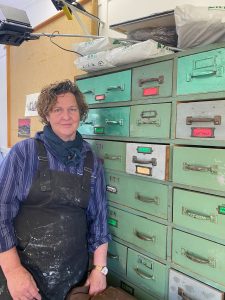Homeless in Canberra?
Canberra is parliament and politics. It is bush and heritage buildings. Canberra is cold fronts and cold backs.
For women that may be fleeing violence, migrants without a job, or retirees living in rentals it can also be homelessness, hunger, and housing stress.
Entering the city from the parliamentary precinct the newly made-up Sydney and Melbourne buildings welcome you to the Canberran face. The landmark buildings now house tattoo parlours and clubs for trophy hunters while some people have nowhere else to sleep but under these arches.
There are many reasons why homelessness in Canberra may surprise some but sleeping bags and full shopping trolleys are slowly becoming an unmistakable feature of the city centre’s landscape.
“You never used to see people in the streets of Canberra”
The last census estimated that a staggering 116 427 people were homeless nationwide.
The severity of homelessness in the territory may be minimised as the majority of those that are categorised as homeless aren’t sleeping on the streets or on park benches.
Frances Crimmins, Chief Executive Officer for YWCA Canberra, asserts
“We do have rough sleepers [in the ACT]”
The definition of homelessness extends to people sleeping in cars, temporarily housed with friends and family (couch-surfing), makeshift housing, tents, boarding houses, staying in supported accommodation and severely overcrowded dwellings (units that need four or more extra rooms).
Frances says many, especially women, try their best to hide that they are experiencing homelessness over concerns for their safety.
“Women, particularly women with children and older women will try to hide this because of fears of safety. That’s the number one concern.”
Canberra is not unique as homelessness is on the rise in major cities around the nation. A report by the Australian Housing and Urban Research Institute (AHURI) used census data from 2001 and 2016 to show how rates of homelessness are shifting geographically to metropolitan areas.
The report stated that “By 2016, capital cities accounted for just under two-thirds of all homelessness nationally.”
A reason behind this change includes the shortage of affordable private rentals in the Canberra market. There are a number of people who are ineligible for public or social housing but are unable to compete in the private rental market.
Nicole Wiggins from the Uniting Church Early Morning Centre agrees that the cost of living in Canberra makes it difficult for some.
“[There are] incredibly high rents in Canberra, and the cost of living is incredibly high because we’ve got a much higher average income level”
According to the data from the Australian Bureau of Statistics (ABS), Canberra and the ACT have more people employed in positions as professionals, clerical and administrative workers, and managers than the rest of Australia. It is also reported that the median weekly income far exceeds that of the rest of the country.
While there are many that are within and above this income level it is clear that these incomes are in specific industries.
Nicole says, “…we have all these incredibly highly paid public servants.”
The high median incomes distort the demand by not accounting for those that fall below it. This coupled with high costs of living and low provision of public housing mean low-income households in Canberra are particularly vulnerable.
Nicole says that “Canberra is a rich, affluent city but unless you’re in that income bracket then it’s a difficult place to live financially.”
For example, young people and students are increasingly vulnerable. The Youth Survey by Mission Australia found that one in six young people had couch surfed. In the ACT the figure is around one in 10.
The impact of COVID-19 pandemic
Stay-at-home orders and lockdown laws took over the world. Resulting in the closure of many shops, restaurants, and other services. There have been major job losses across the economy. In pre-empting the economic halt that would come as a result of closing numerous industries the federal government introduced the stimulus packages JobKeeper and JobSeeker.
While Australians received income support payments, migrant workers and international students were left out.
Border closures were announced to curb the introduction and continued spread of COVID-19. This meant that there has been a dramatic fall in migration and less pressure on housing development.
The impact of the pandemic may have been more acute for some members of the community like international students as well as women and children experiencing domestic and family violence.
Before COVID-19, a survey revealed that nearly half of all international students are said to rely on work for income. In this study, 44% worked in food services and hospitality, and 16% in retail. More than half of this group lived in houses with three or more people. A quarter of respondents shared their bedroom, which indicates overcrowding. The impact of the coronavirus would worsen the situation for many. They would risk being homeless without the opportunity to go back to their home country.
In addition, during the mandated self-isolation period, the number of women fleeing violence skyrocketed, similar to disaster. The pandemic has meant that YWCA Canberra has been dealing with an influx for their community and accommodation services.
These women, in particular, need emergency and long-term accommodation, in addition to a number of other supports.
Homelessness existed before the pandemic
While the pandemic has undoubtedly thrust a new cluster of people into financial insecurity these issues have been prevalent long before the pandemic, lockdown, and the impending recession.
Nicole says that rental distress has always been a factor placing individuals at risk of homelessness.
“We have a saying in the homelessness sector, that a large number of Australians are only a pay-check or two away from homelessness.”
As JobKeeper and JobSeeker have maintained the livelihoods of many, the ACT Specialist Homelessness Sector must prepare for an increase in demand for their services once these income support payments are rolled back.
“Increase in JobSeeker allowance and the rent moratoriums [are] masking a problem to come.”
In addition, since March 2020, JobSeeker replaced both the Newstart Allowance and the Age Pension at a new, higher rate. This has meant that all government income support recipients are better off now than they were before the pandemic.
At the EMC while some housing services have already experienced an influx in demand, their other services have not followed the trend.
The EMC provides free breakfasts, access to showers, and mail services for those experiencing financial strain or homelessness. While these are essential services that provide guests with dignity, there has been a fall in demand. Nicole attributes this to the increased JobSeeker payments.
“…a lot of our regular people who used to come as they couldn’t afford to buy food and needed [our services] to supplement their very low CentreLink income will be returning and needing breakfast and lunch.”
Research has shown that older people are increasingly at risk of homelessness. For years they have had low levels of homelessness assistance and overrepresented in those living in boarding houses, and in caravan parks.
Currently, older women are particularly vulnerable as they are the fastest-growing demographic in homelessness. The circumstances that result in this outcome are varied with only some being related to COVID-19.
A survey by YWCA Canberra showed that older women are less likely to be home-owners than their male counterparts. This means that they continue to face rent-related stress.
Additionally, a number of older women have little superannuation accumulated. This may be as at the time when they were active in the workforce the scheme had not yet been introduced. Another factor would be the expectation for women to leave the workforce after marriage or the birth of their children.
The rise is acute with single older women. This is an important distinction as AHURI found that homelessness was inversely proportional to the number of married couples in a region. This means that where there are more married couples, there is less homelessness. Newly single older women are unable to support themselves following divorce or the death of a partner.
Programs such as Betty Searle House, Eclipse Apartments, Next Door, and the Lady Heydon House are specifically designed to support older women. The expansion of gender-informed services such as these would help meet the needs of this group.
Just Build More Houses: The Housing Stock Fallacy
Increasing housing stock seems like the obvious way to address homelessness and curtail concerns of densely populated areas. However, there have been a number of studies that assert this simple solution misunderstands the problem.
To start, between 2006 and 2015, all Australian capital cities’ housing supply increased faster than population growth in the same regions.
The authors of this study show that increasing housing stock only works when a housing filtering process occurs. This would mean that when high-income individuals move to a new house, they vacate their current housing unit. If the house falls in value after it is vacated, it could be transferred to households in a lower income bracket. Eventually, this flows down to enable the homeless to be able to access housing.
However, this is often not the case. An example of this interruption would be if the high-income family chooses to keep both homes.
This is not to say that increasing housing stock will not contribute to the eradication of homelessness. The issue is just more complex than has been previously framed. Therefore, the government must invest in social and public housing.
It is essential government supports community organisations with programs such as YWCA Canberra’s Rentwell to provide affordable housing.
Is Housing-First the solution?
Heatmaps released by Everybody’s Home showed that is currently a shortfall of 3000 social homes and up to 1600 people on any given night across the three electorates: Bean, Fenner, and Canberra. This was just prior to the pandemic.
ACT has recently adopted a housing-first model to curtail rising homelessness in the region. This means providing stable accommodation without the typical conditions for access to social or public housing. The previous model required recipients to adhere to conditions such as sobriety or remaining under a certain income level.
The initiative was proposed in 2018 following success in Finland, Scotland, and Canada. It has also been seen to be effective in other jurisdictions across Australia, namely Hobart and Melbourne.
The rate of investment in public housing has been on a downward trend. Public housing units have fallen from seven percent of all homes to just over four percent between 1991 and 2016 respectively.
Housing-first requires the government to prioritise funding to housing initiatives and the services by the Specialist Homelessness Sector.
For this approach to work, individuals receive support for their complex needs ranging from food assistance, money management, mental health or alcohol, and other drug issues. The success of this initiative requires a large initial cost and is a long-term budget commitment.
In part, as a result of the new approach, the territory is leading the nation in employment and training outcomes for people accessing homelessness support services.
There are other ways the funding system can be improved. Nicole Wiggins says that the current funding system makes long-term planning for the sector incredibly difficult.
“Funding is always an issue. They are usually in three-year lots which makes it really difficult for long-term planning. You don’t know whether you’ll be refunded at the same amount, whether you’ll be refunded at all.”
While being a supporter of housing-first as an evidence-based approach, Nicole emphasises the importance of emergency accommodation as a necessary feature in the plan to eradicate homelessness.
People tend to downplay the need for crisis beds, according to Nicole, and say “well, we’re using the housing-first model so we’re not providing crisis beds, we want long-term solutions.”
Nicole’s sentiments remind us that addressing homelessness in the territory requires a combination of intervention and prevention tactics.
In August of this year, the ACT government committed an additional $61 million dollars for the construction of new, and maintenance of previous, social housing units.







Be the first to comment!